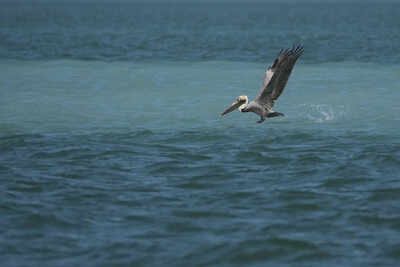California Takes Significant Step Towards the World's Largest Wildlife Crossing

Each year, between one and two million vehicle collisions with large animals occur in the United States, leading to tragic outcomes that include hundreds of human fatalities and an even greater number of animal deaths. To combat this alarming statistic, wildlife crossingsâengineered structures designed to facilitate the safe passage of animals across roadsâare emerging as a promising solution. In a groundbreaking initiative located in California, a project aimed at creating the world's largest wildlife crossing has reached a pivotal milestone.
Recently, construction crews began the process of laying down 6,000 cubic yards of soil on the Wallis Annenberg Wildlife Crossing. This crucial step is not merely about aesthetics; it will provide the necessary foundation for the growth of native vegetation, which in turn will encourage wildlife to utilize the crossing once it is completed. The wildlife crossing is set to span ten lanes of U.S. Highway 101 in Agoura Hills, located within Los Angeles County, and is a key undertaking in the effort to make roads safer for both humans and wildlife alike.
California Governor Gavin Newsom heralded this significant development in a statement released on Wednesday. âCalifornia is a state of dreamers and doersâand with the Wallis Annenberg Wildlife Crossing, weâve turned our dreaming into doing. As soil gets placed over the bridge, weâre one step closer to reconnecting wildlife with habitat thatâs been divided for generations,â Newsom remarked. He emphasized not only the ecological importance of the crossing but also its role in enhancing road safety. âWeâre not only making habitats whole again, weâre making our roads safer,â he added.
The concept of the crossing has its roots back in 1990 when the Santa Monica Mountains Conservancy commissioned a study to assess the urgent need for a wildlife crossing in the area bordering U.S. 101 and Liberty Canyon Road. The study identified this location as critical for facilitating the movement of local mountain lion populations, which face the risk of extinction without such a connection. Without the crossing, wildlife in the Santa Monica Mountains would remain isolated, unable to traverse to the Simi Hills on the opposite side of the busy freeway.
âHumans created this problem,â stated Jeremy Wolf, the mayor pro tempore of Agoura Hills, during an interview with the Los Angeles Times, as he observed the arrival of soil for the project last week. âWeâve created islands of habitat fragmentation with our roadways and housing encroaching deeper and deeper into the wild urban interface, and now weâre fixing this problem by using human ingenuity for good purposes.â His comments reflect a growing awareness of how urban development can disrupt natural ecosystems and the importance of taking corrective action.
Beyond assisting mountain lions, the Wallis Annenberg Wildlife Crossing will also provide safe passage for a variety of other species, including deer, bats, bobcats, monarch butterflies, and desert cottontails, facilitating their movement between different habitats. The soil being laid will support the planting of around 5,000 native plants, including species of coastal sage scrub, with the planting of these vegetation expected to commence as early as May.
âWildlife crossings are unique because they allow people and nature to thrive together,â commented Tony Tavares, the Director of the California Department of Transportation (Caltrans), which is a key partner in this public-private habitat project. âBy building the Wallis Annenberg Wildlife Crossing, Caltrans is supporting transportation infrastructure that will not only reconnect and restore habitats but also reduce vehicle collisions with wildlife and enhance highway safety.â
The Wallis Annenberg Wildlife Crossing represents more than just a construction project; it stands as a testament to the idea that infrastructure can coexist harmoniously with the natural world, paving the way for a future where human development and wildlife preservation go hand in hand.


















